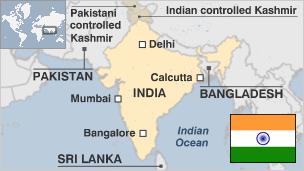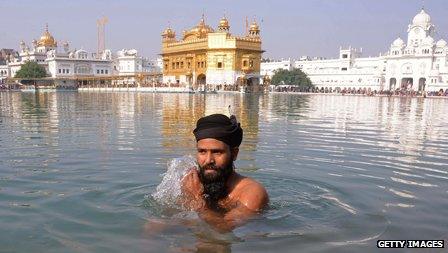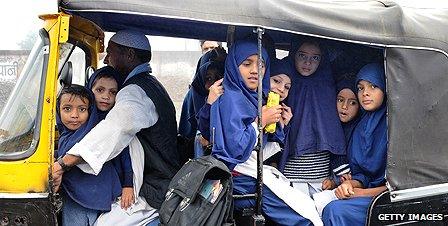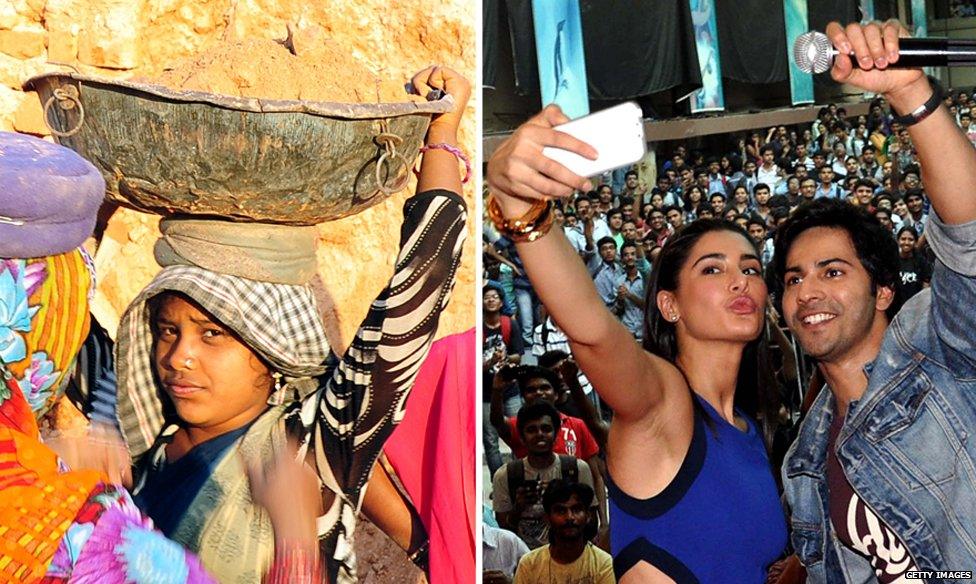India profile - overview
- Published

The world's largest democracy and second most populous country emerged as a major power in the 1990s. It is militarily strong, has major cultural influence and a fast-growing and powerful economy.
A nuclear-armed state, it carried out tests in the 1970s and again in the 1990s in defiance of world opinion. However, India is still tackling huge social, economic and environmental problems.
The vast and diverse Indian sub-continent - from the mountainous Afghan frontier to the jungles of Burma - was under foreign rule from the early 1800s until the demise of the British Raj in 1947.

The subsequent partition of the sub-continent - into present-day India and Pakistan - sowed the seeds for future conflict. There have been three wars between India and its arch-rival Pakistan since 1947, two of them over the disputed territory of Kashmir.
A peace process, which started in 2004, stayed on track despite tension over Kashmir and several high-profile bombings until the Mumbai attacks of November 2008, carried out by Islamist militants overwhelmingly from Pakistan and organised by the Pakistani movement Lashkar-e-Taiba. India announced that the process was on pause the following month.
Communal strife
With its many languages, cultures and religions, India is highly diverse. This is also reflected in its federal political system, whereby power is shared between the central government and 28 states.
However, communal, caste and regional tensions continue to haunt Indian politics, sometimes threatening its long-standing democratic and secular ethos.
In 1984 Prime Minister Indira Gandhi was gunned down by her Sikh bodyguards after ordering troops to flush out Sikh militants from the Golden Temple in Amritsar.
And in 1992, widespread Hindu-Muslim violence erupted after Hindu extremists demolished the Babri mosque at Ayodhya.
Economic progress
Independent India's first prime minister, Jawaharlal Nehru, dreamed of a socialist society and created a vast public infrastructure, much of which became a burden on the state.

India is the world's second most populous country after China
From the late 1980s India began to open up to the outside world, encouraging economic reform and foreign investment. It is now courted by the world's leading economic and political powers, including its one-time foe China.
The country has a burgeoning urban middle class and has made great strides in fields such as information technology. Its large, skilled workforce makes it a popular choice for international companies seeking to outsource work.
But economic progress is hampered by corruption, widely regarded as endemic and engulfing every level of politics and society.
The vast mass of the rural population remains impoverished. Their lives continue to be influenced by the ancient Hindu caste system, which assigns each person a place in the social hierarchy.
Discrimination on the basis of caste is now illegal and various measures have been introduced to empower disadvantaged groups and give them easier access to opportunities - such as education and work.
Nuclear tests carried out by India in May 1998 and similar tests by Pakistan just weeks later provoked international condemnation and concern over the stability of the region.
The US quickly imposed sanctions on India, but more recently the two countries have improved their ties, and even agreed to share nuclear technology.
India launches its own satellites and in 2008 sent its first spacecraft to the moon. It also boasts a massive cinema industry, the products of which are among the most widely-watched films in the world.

India's economy combines traditional industries, such as brick making, left, and more modern ones such as a successful film industry with ''Bollywood'' stars, right